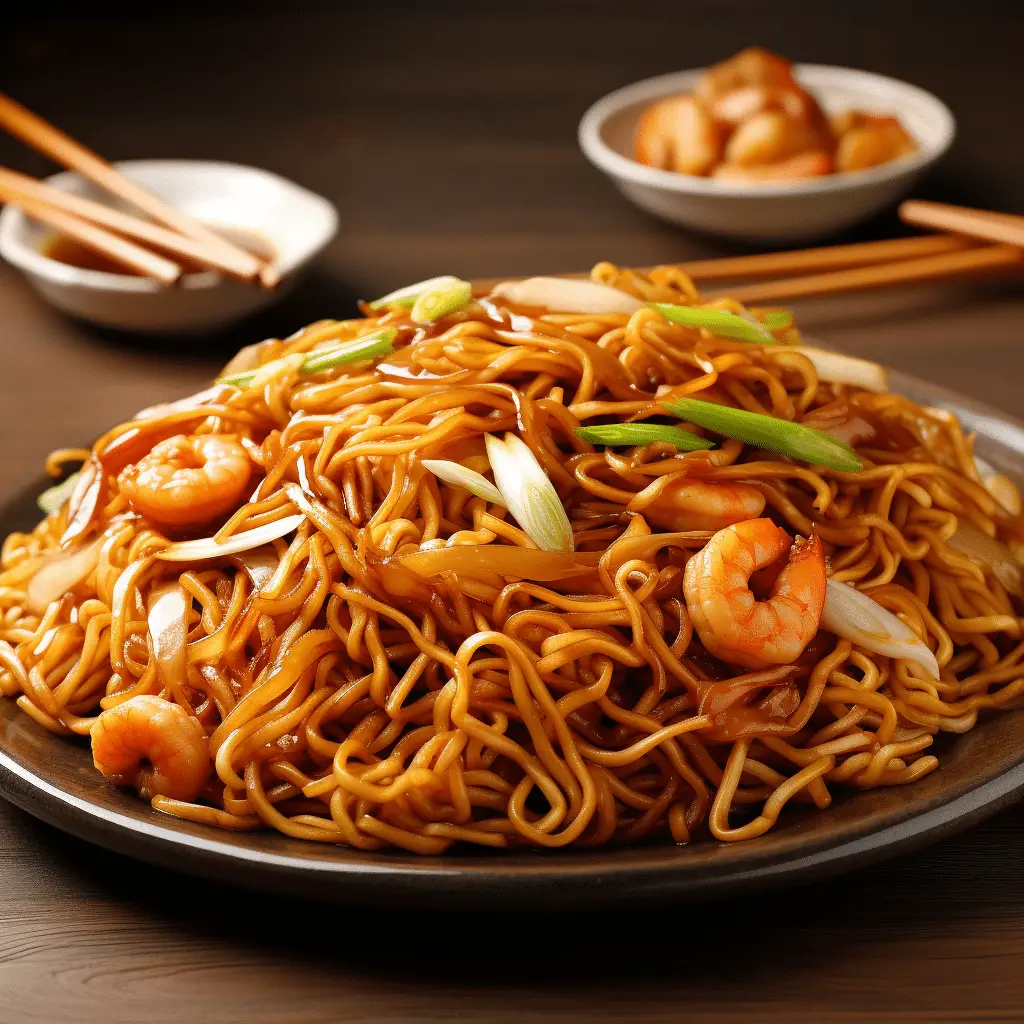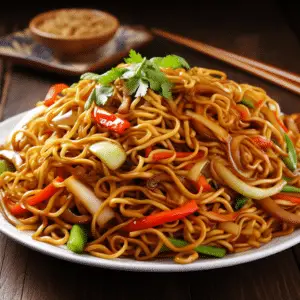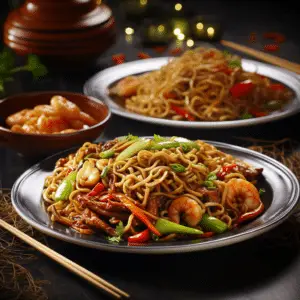
Mei Fun vs. Chow Mein
Mei Fun vs. Chow Mein: Comparison of Chinese dishes: Enjoyed by millions, Mei Fun and Chow Mein are two of the most popular Chinese dishes. Both recipes are loved by families worldwide, but their ingredients and methods differ vastly. Which one is better? If you’re looking for a quick and easy meal, Mei Fun and Chow Mein are the perfect choices
Let’s look at this tasty classic combination and find out which recipe best suits your kitchen!

Mei Fun vs. Chow Mein: Overview
What Is Mei Fun
Mei fun noodles are also called “vermicelli” in China. It is the staple food for many people worldwide and is widely used in Asian culture and cuisine. Mei fun is made from long, thin strands of dough that are pulled into flat sheets or oval shapes. Each strand is then rolled up into a long tube and cut into smaller lengths before being cooked.
Mei fun is usually served as part of a meal with soup or other ingredients such as meat, vegetables, tofu, or mushrooms. You can also use it to make various dishes such as spring rolls or egg rolls. In China, it is often served with steamed fish or chicken.
In Asian cultures, mei fun is popular among many people because it has a strong taste, making it easy to eat with chopsticks without using your hands. It also has many health benefits because it contains many vitamins and minerals such as iron, calcium, zinc, and protein, which help prevent nutrient deficiencies in the body.
What Is Chow Mein
Chow mein, or chow mein noodles, are wide flat noodles often served in a stir-fry. Chow mein is one of the most popular noodle dishes in Chinese cuisine, and it can be found anywhere from Asian restaurants to Indian cafes to fast-food chains.
The dish is made with various ingredients depending on the region. Still, many versions include egg noodles or thin rice noodles in addition to the regular chow mein noodle. In some regions, you’ll find vegetable-based chow mein recipes with tofu or veggies mixed into the sauce and stir-fried alongside your protein.
It’s important to note that while there are many different types of chow mein, they all share some common characteristics:
- They’re made with flat noodles that are usually cooked in a stir-fry.
- They often have a light soy sauce-based broth.
- They typically feature various meats and vegetables cooked together over high heat until tender.
How Mei Fun and Chow Mein Compare
In a world where we are constantly being inundated with messages about how to eat healthily, finding a dish that doesn’t feel like missing something can be difficult. Mei Fun is a great example of this.
While the noodles themselves are made from rice flour, they’re served in a broth that has been thickened with corn starch. This means that you don’t have to feel guilty about your meal if you decide to have some on the side of your plate.
On the other hand, Chow Mein is made with Chinese egg noodles and served in a broth that has been thickened with corn starch. You will probably notice that these two dishes do not taste alike when prepared well; however, their similarities do not end there.
For instance, for each of the two noodles to be fried, they must be pre-cooked. They will then be integrated, as per the respective recipes, resulting in unique, delicious tastes. On the same note, both dishes heavily depend on the noodles as the base. You will add them to other seasonings and vegetables for enhancement and complexity.
Here is how these Chinese noodles compare;
Flavor
Both Mei Fun and Chow Mein are very similar in their flavor. When fresh, they have a very light, delicate flavor that is not too strong but still has a nice flavor. If you cook the noodles in too much water, they will become mushy and take on more of an egg-drop soup-type taste.
Appearance
Chow mein is a dish made with flat rice noodles, stir-fried with meat and vegetables. Chow mein has a thicker consistency than the traditional spaghetti-like noodles used for chow fun.
Mei fun noodles resemble angel hair pasta, but they are much thinner than chow fun noodles and do not have much flavor of their own. They can be added to other dishes as a garnish or used as part of the main dish by simply soaking them in boiling water until soft, then draining and adding them to the dish for further cooking.
Texture
The texture of both noodles is similar, but Mei Fun has more of a bite while Chow Mein has a smoother feel.
Spiciness
Chow Mein noodles are made from wheat flour but they have a much spicier flavor than Mei Fun noodles do. This means that if you are not a fan or spicy food, then these noodles may not be for you. However, if you love spicy food, then this is something that you should look into trying out because. It really does bring out all the flavors in your food!
Ingredients
The ingredients used in each noodle dish are different as well. While both have soy sauce, Mei Fun has an additional ingredient called oyster sauce which lends a slightly stronger umami flavor to its broth.
Gluten-Free
The noodles in Mei Fun are naturally gluten-free because they contain no wheat protein. Wheat is a common allergen for many people. So if you are on a gluten-free diet or want to avoid foods like wheat and rye. You will want to look for Mei Fun instead of Chow Mein.
Shelf Life
Mei Fun noodles are stored at room temperature for up to a year, though they will last much longer if kept in the freezer. Chow Mein noodles have a shelf life of about two years. You can freeze the noodles for up to three months.

Bottom Line
Mei Fun vs. Chow Mein: Comparison of Chinese dishes are oriented to have a finer appearance compared to chow mein. Due to the smaller surface area of its width, the noodle appears narrower and thinner than chow mein. The texture of mei fun is noticeably smooth and slippery. Suited for an array of different types of topping such as meat, vegetables, or even soup.
On the other hand, chow mein noodles are made in a larger size with abundant chewiness and elasticity.